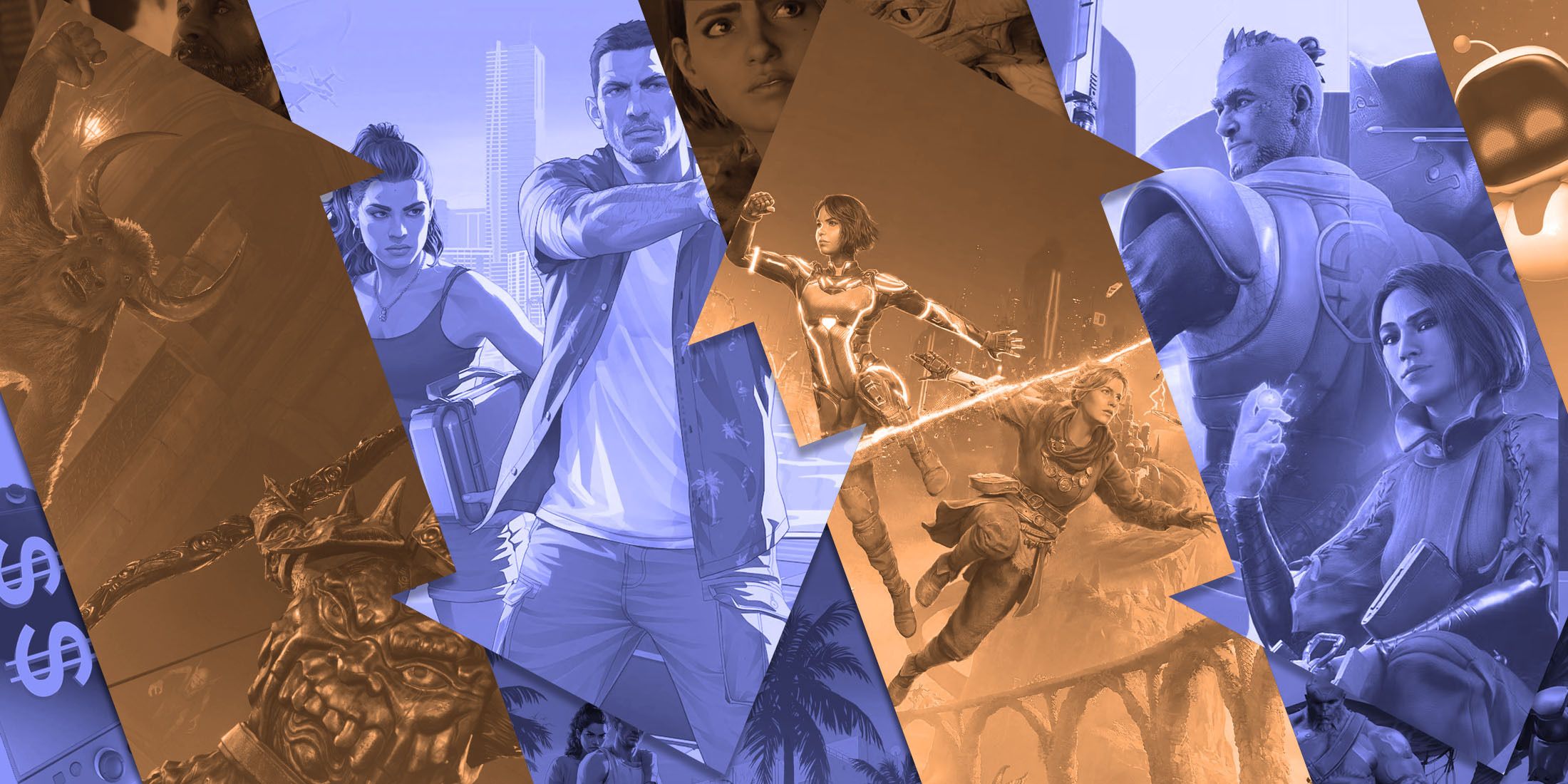“Content” is an ubiquitous term. A video on YouTube can be considered content. A photo on Instagram. A blog post online. All content.
Valnet Inc., as a global digital publishing company, deals in a variety of content types. Across our different brands, we’ve done our best to quantify the value our content possesses. We seek to provide our readers with articles that are both informative and entertaining, balancing practical utility with engaging insight.

Related
Meet the Team Fueling Valnet’s Flagship Gaming Publication: Game Rant
GR dissects releases at midnight, playtests out of pure obsession, and crafts coverage that speaks gamer-to-gamer. Meet the team behind the screen!
Our biggest assets when it comes to achieving this goal are and the tools our proprietary CMS gives them. Combined, they are invaluable in making our content stand out from the sea of ubiquity.

All Valnet brands deal with their own niche of enthusiast content. Brands like Game Rant, TheGamer, and Dual Shockers focus on gaming as their vertical. Brands like Collider and ScreenRant focus on movies and television shows. Brands like How-To Geek and Android Police focus on tech-driven subjects. Each and every Valnet brand has a vertical that they support and delve into. No matter the subject, there’s a passion for it.
It's a brilliant way to explore my feelings on a new movie or show — and find like-minded people.
Alex Leadbetter, the Operations Manager behind ScreenRant, has not only had a passion for film media, but for journalism as well. “I was obsessed with watching movies and TV as long as I can remember, and I've also been driven to write myself almost as long, with experience in some form of student journalism since I was 10 years old. As such, my passion for the media ScreenRant covers is matched by a love for the content that can be created around them — reviews, analysis, deep dives. It's a brilliant way to explore my feelings on a new movie or show — and find like-minded people.”
In a similar fashion, Andrew Martonik, the Operations Manager behind Valnet’s tech sites, combined his love of tech with his love of discussing it. “I came to tech publishing from my early love of the tech itself; I was a huge fan of mobile tech and lived in the forums talking about the latest gadgets with my fellow nerds. I was tinkering with phones and saving every penny to buy the next big thing. When an opportunity came up to start freelance writing about the exact same things I was already writing about every day, it felt like a dream job. One thing led to another and I turned it into a full-time position, then an editor, senior editor, editor-in-chief and beyond.”
Having enthusiasm for a topic isn’t the only thing we look for. Our editorial also develops a sense of what topics interest our readers the most. Sure, we use tools like Google Trends to see what topics within our verticals have increased interest. But we also learn to suss good topics out on our own. We develop a gut instinct for what’s useful.
For example, when it comes to writing about a game that hasn’t launched yet, there’s no data on what players are interested in learning more about because the game hasn’t reached them yet. But as people who love, live, and breathe games, we can make educated guesses about what to cover based on work with past titles.
Plus, if we get stuck in a particular spot of a game, we know others might get stuck as well, so it makes for a good guide topic.
The drive to write about what you’re passionate about is innate to our team. But in an external capacity, our CMS lets us structure our passions into informative, helpful content. And with different brands covering different verticals, our CMS accommodates them all. Whether we’re talking about films, games, sports, or tech, we have the tools needed to heighten our writing and highlight our enthusiasm.
“[The] injected tag feature has been a total game-changer for taking our content to the next level,” Valnet Screen’s Content Manager Natasha Taggart shares. “It allows us to insert spec cards for any movie or show from ScreenRant’s massive 120k-title database. Tags can be as full as a writer chooses, with information including release dates, cast lists, and streaming availability (that updates automatically), it’s all just a few clicks away. What used to be manually MacGyvered into the content with HTML or plain text, now happens with the click of a button, and it looks incredibly polished on the front end — all thanks to an IT team that worked diligently on creating the database tech.”
Natasha gave us the perfect example of tag card use cases in this article ranking Christopher Nolan movies. “It’s the perfect combination of a tool that enhances the efficiency for writers and the experience for readers. It's a great value-add, all the info is right there with all the data the reader was going to Google anyway.”
Tags and their accompanying databases (DBs) are actually a very popular feature across Valnet brands, though they don’t always appear the same on the front-end of our CMS. A game or movie tag card can ultimately end up looking different from a product tag card, but their creation and use are appreciated no matter how they are utilized.
“The most-used feature across all of our content types is product tags,” Andrew reveals, “because we’re constantly covering products people can buy and want to have big, nice-looking callouts for those products. As we expand our coverage areas on some sites, like How-To Geek, we’re also subscribed to and using GameRant DB and CarBuzz DB to include product tags to enhance our games and automotive coverage!”

It’s not enough that a piece of content is informative. Otherwise, our articles would just be bulleted lists of specifications. Boring. Bland. We don’t want that. Across all Valnet brands, we aim to provide additional insight into the subjects we write about.
We frequently see the words “authority” and “trust” tossed around when discussion of content value comes up. We see them so much, it’s starting to feel like overused jargon whose definitions boil down to “good information.” What we actually intend when we use these terms is a series of practices that show we, as a team of creators, editors, writers, what-have you, know what we’re talking about. Anyone can copy-paste straight-up information; authority and trust-driven brands provide insightful commentary alongside that information.
One of the ways we do this is seen in reviews. Most Valnet brands include reviews in their repertoire of written content. Reviews for movies, games, products, etc. And each of us has different methods for providing that essential element of insight when we review something.
Natasha’s summation of reviews in Valnet’s Screen portfolio is perfect and succinct. “Screen (which includes ScreenRant, Collider, CBR and MovieWeb) critics bring in their own viewing history, comparisons to earlier installments, and emotional takeaways to their reviews. Of course, reviews are editorialized — that's the point of a review anyway! It's actually the opposite of what anyone learns in Journalism school — we want the bias. That said, it’s not just what happened in a movie or even how it made the reviewer feel, it's why that matters. If you’re reviewing a long-running franchise, you need to show the reader that you’ve followed the journey.”
Alex’s thoughts on reviews go more in depth.
His answer deep-dived (deep dove?) into the question, but it was too good to shorten, so we included his entire response. You’re welcome!
“Review writing is just one form of analysis, and one of the most delicate. Reviews aren't just personal screeds or plot summaries: they're an assessment of the media, turning something subjective into an objective piece of text. Further, there is a difference between what readers want from a review depending on [the] medium. Movie reviews are typically there to guide someone as to whether a movie is worth their hard-earned time and money, while episodic TV reviews are often by people who've already watched the episode and want to dive deeper into discussion. The best review, in any form, is a piece of conversational analysis that can satisfy both sides.”
He continues, saying “A great review shouldn't need to qualify the writer's expertise, and we encourage our critic to quantify how the movie/show/game made them feel and think to best give a sense of the experience. As with all outlets, we have a baseline expectation of the full media being consumed (watching the full TV series, completing a game), but additionally ensure that reviewers are matched to the content that they're covering — if a movie is part of a series or from a notable director, our critic is familiar with that work and can make relevant comparisons with confidence.”
That familiarity is doubly important when it comes to product reviews handled by the brands within the Valnet Tech portfolio, as Andrew attests to. “Anyone can repeat spec sheets and vague superlatives without even using a product, so it’s critical to express the details of your personal experience that simply can’t be faked. The bare minimum is detailed, high-quality photos of the product that you take yourself, and highlight the details that align with your words.
You can’t just sit around the house and say ‘Yep, this phone’s screen looks good!’
"It’s also critical to speak to the insights you can only provide after having used the product for an extended period. Because so much of the personal tech industry is experiential and important to our daily lives, that often means taking tech out into the real world and living with it. You can’t just sit around the house and say ‘Yep, this phone’s screen looks good!’ — the audience deserves to know how that screen looks in the direct sun in a park when you’re trying to take a photo, or if it gets dim enough to sneak a message in a dark restaurant without blinding you.”
In addition to insight on an individual level, our CMS lets us add a degree of interactivity to our content, making articles more entertaining and thought-provoking.
Visitors to respective sites, like their team of writers and editors, are fellow enthusiasts, so we want to encourage their insight as well. To do this, we can pose direct questions to our readers using threaded comments beneath the body of an article. We can also make polls and pin them to posts to gauge reader interest (or disinterest) in a topic.
It might seem like a small thing — commenting on an article or rating a favorite piece of media in one of our databases — but these reader interactions are vital and definitive, transmuting traditional, one-way media consumption into an interactive dialogue wherein readership registers a tangible impact.
These are basic additions to our articles that not only create a back-and-forth with our readers, they help us create that good ole content value.
At the end of the day, what quantifies content value is if the piece of content successfully answers this question: Was it useful and/or insightful for its intended audience?
Did this game guide actually assist a reader as a resource while playing a game? Did this review on a new television series resonate with someone who either felt similarly to the writer or strongly disagreed? Did this video entertain a viewer, possibly make them chuckle at least once? Did this comparison of two tech products help a prospective buyer make an informed decision about whether or not to purchase one of them?
No matter if we’re talking movies, comic books, cars, video games, or wrestling, it’s Valnet’s mission to make any content we create as helpful and as enjoyable as possible for our readers and viewers. But whether we’ve achieved this goal is always up to you.

More
What Makes a Perfect Fan Theory? ScreenRant Writers Weigh In
ScreenRant's writers love fan theories because they bring fans together and allow them to dissect their favorite movies and TV shows.










